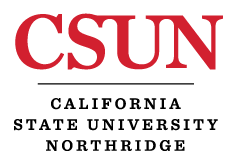Academic Dishonesty
The maintenance of academic integrity and quality education is the responsibility of each student within this University and the CSU system. Cheating or plagiarism in connection with an academic program at a CSU campus is listed in Section 41301, Title 5, California Code of Regulations as an offense for which a student may be expelled, suspended or given a less severe disciplinary sanction. Academic dishonesty is an especially serious offense and diminishes the quality of scholarship and defrauds those who depend on the integrity of the University’s programs. Such dishonesty includes:
Cheating
Intentionally using or attempting to use unauthorized materials, information or study aids in any academic exercise. Comments:
- Faculty members are encouraged to state in advance their policies and procedures concerning examinations and other academic exercises, as well as the use before examinations of shared study aids, examination files and other related materials and forms of assistance.
- Students completing any examination should assume that external assistance (e.g., books, notes, calculators, pagers, cell phones/cameras, PDAs, other electronic devices, conversation with others) is prohibited unless specifically authorized by the instructor.
- Students must not allow others to conduct research or prepare any work for them without advance authorization from the instructor. This includes but is not limited to the services of commercial term paper companies.
- Substantial portions of the same academic work may not be submitted for credit in more than one course without authorization.
Fabrication
Intentional falsification or invention of any information or citation in an academic exercise. Comments:
- “Invented’’ information may not be used in any laboratory experiment or other academic exercise without notice to and authorization from the instructor. It would be improper, for example, to analyze one sample in an experiment and covertly “invent’’ data based on that single experiment for several more required analyses.
- One should acknowledge reliance upon the actual source from which cited information was obtained. For example, a writer should not reproduce a quotation from a book review and indicate that the quotation was obtained from the book itself.
- Students who attempt to alter and resubmit returned academic work with intent to defraud the faculty member will be in violation of this section. For example, a student may not change an answer on a returned exam and then claim that they deserve additional credit.
Facilitating Academic Dishonesty
Intentionally or knowingly helping or attempting to help another to commit an act of academic dishonesty. Comments: For example, one who knowingly allowed another to copy from his or her paper during an examination would be in violation of this section.
Plagiarism
Intentionally or knowingly representing the words, ideas or work of another as one’s own in any academic exercise. Comments:
- Direct Quotation: Every direct quotation must be identified by quotation marks, by appropriate indentation or by other means of identification and must be promptly cited in a footnote. Proper footnote style for any academic department is outlined by the “MLA Style Sheet” or K. L. Turabian’s A Manual for Writers of Term Papers, Theses and Dissertations. These and similar publications are available in the Matador Bookstore and at the reference desk of the Oviatt Library.
- Paraphrase: Prompt acknowledgment is required when material from another source is paraphrased or summarized in whole or in part in your own words. To acknowledge a paraphrase properly, one might state: “to paraphrase Locke’s comment . . .’’ and conclude with a footnote identifying the exact reference. A footnote acknowledging only a directly quoted statement does not suffice to notify the reader of any preceding or succeeding paraphrased material.
- Borrowed Facts or Information: Information obtained in one’s reading or research that is not common knowledge among students in the course must be acknowledged. Examples of common knowledge might include the names of leaders of prominent nations, basic scientific laws, etc.
Materials that contribute only to one’s general understanding of the subject may be acknowledged in the bibliography and need not be immediately footnoted. One footnote is usually sufficient to acknowledge indebtedness when a number of connected sentences in the paper draw their special information from one source. When direct quotations are used, however, quotation marks must be inserted and prompt acknowledgment is required.




